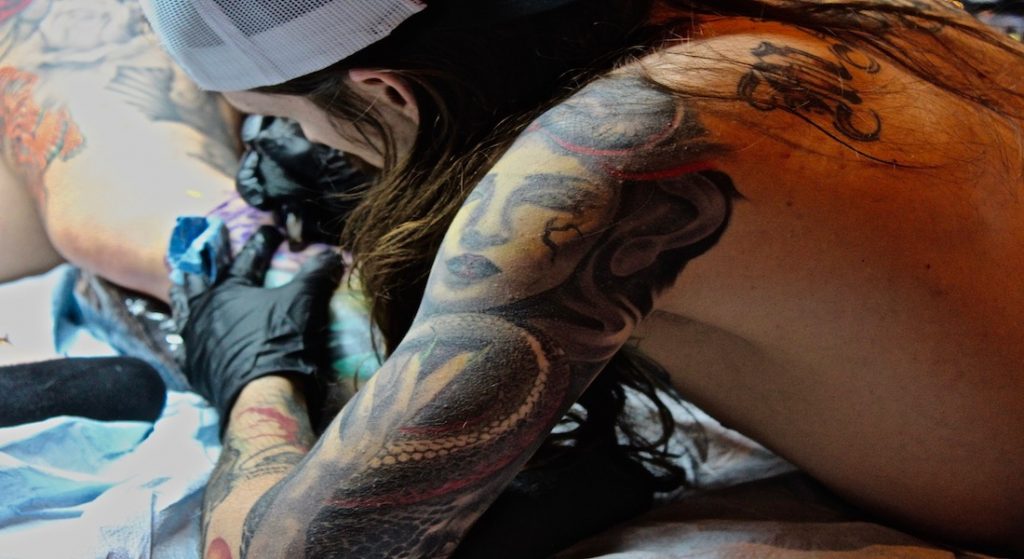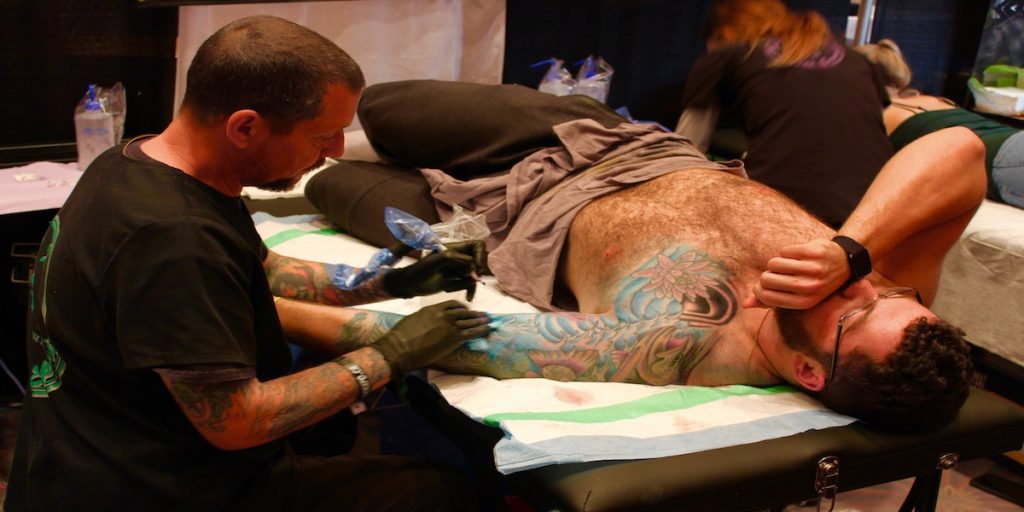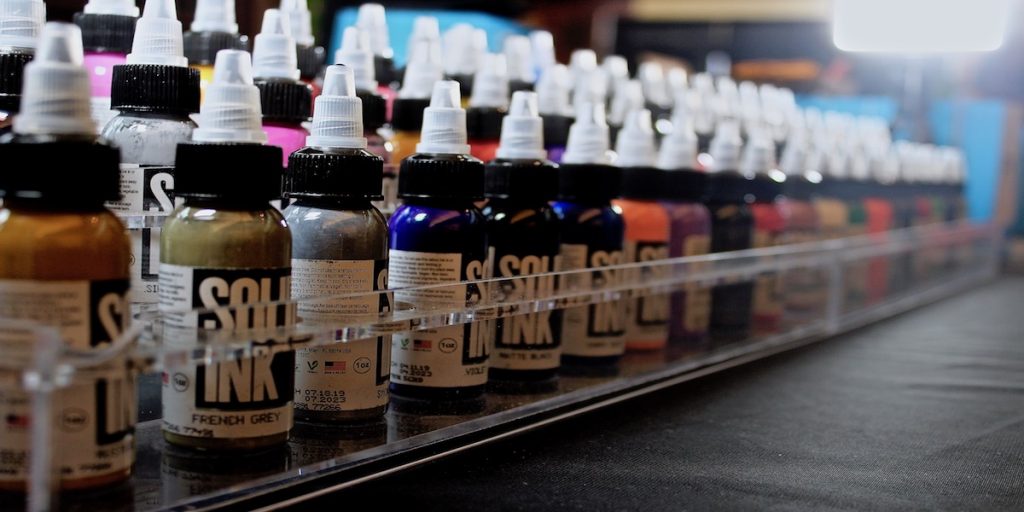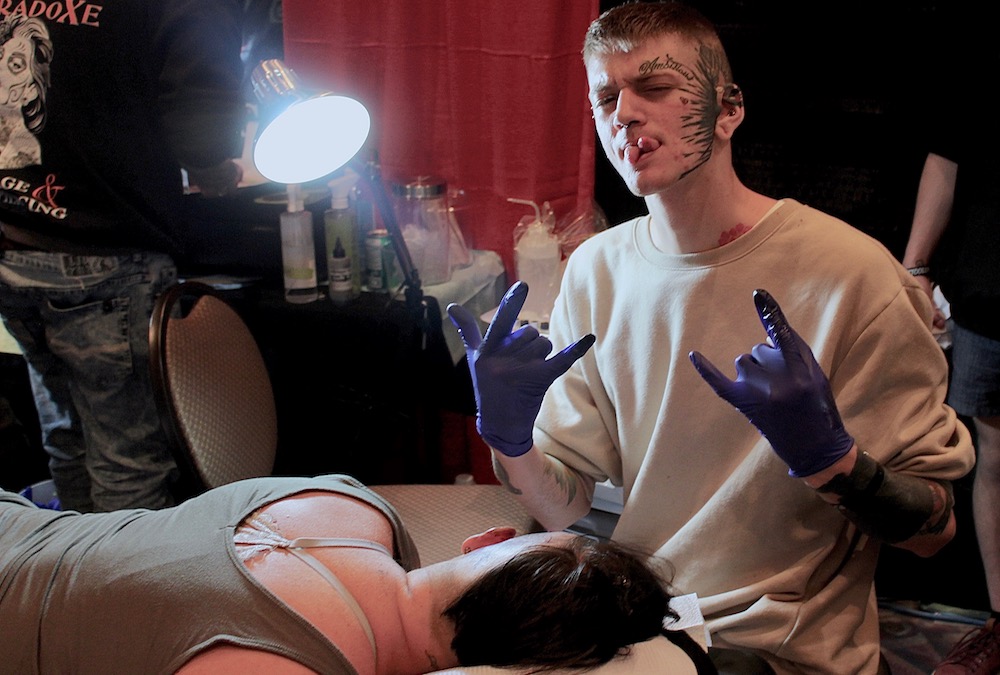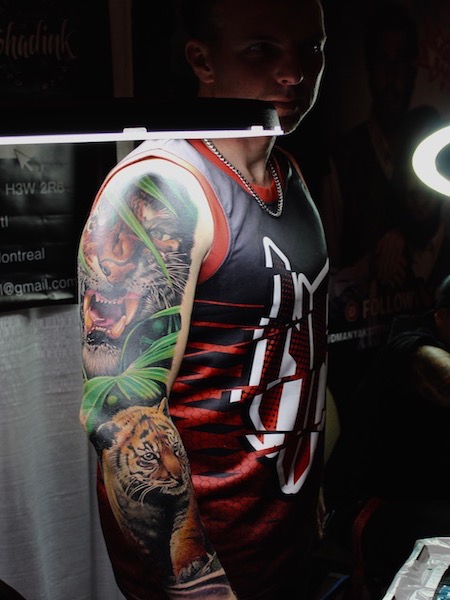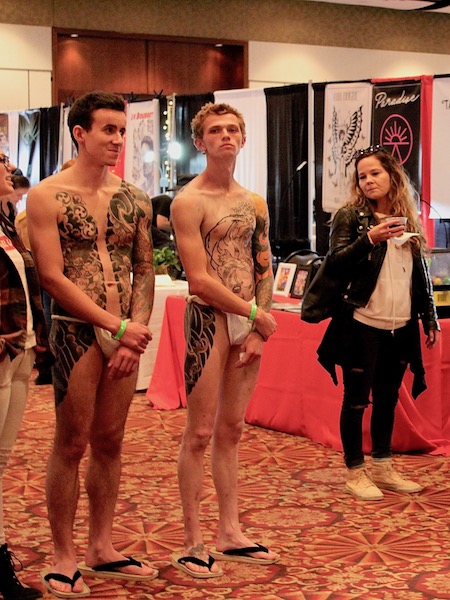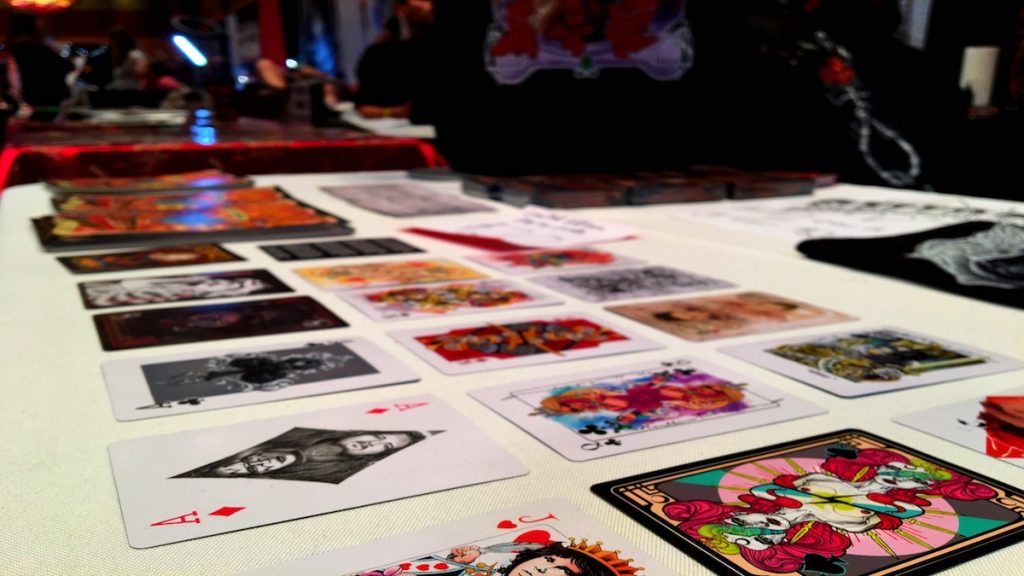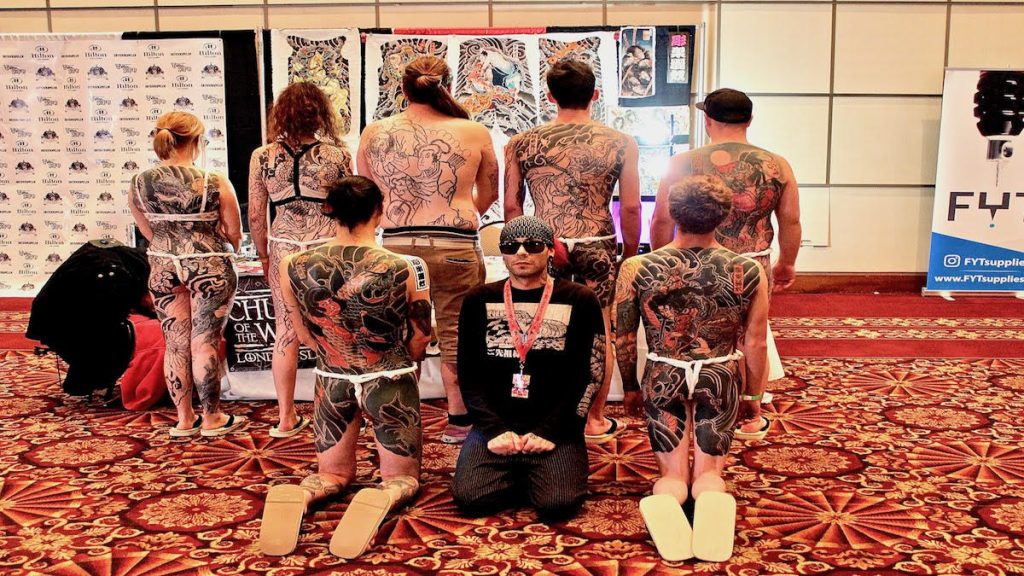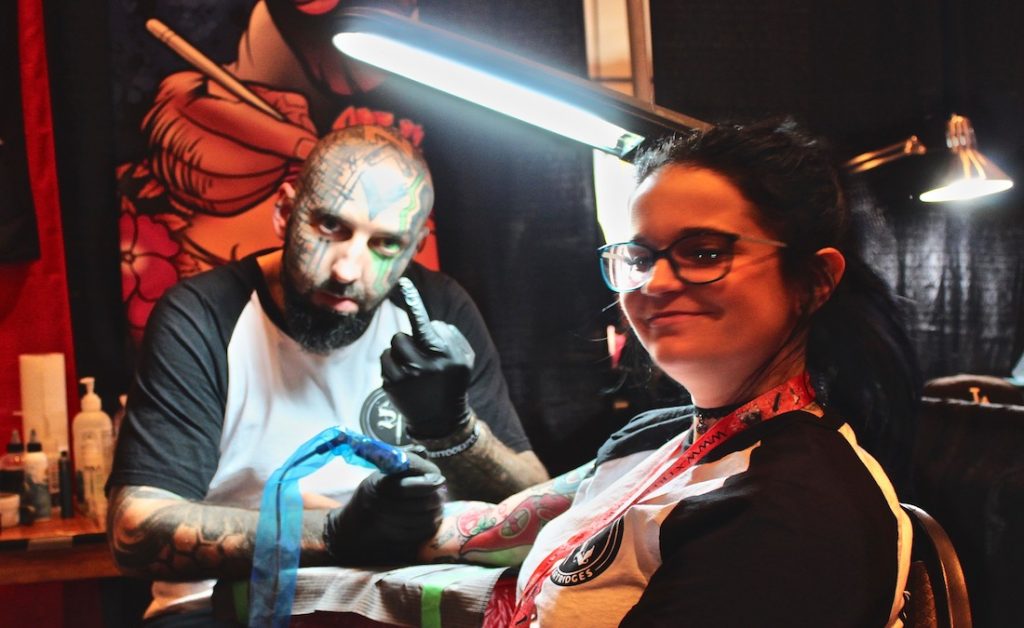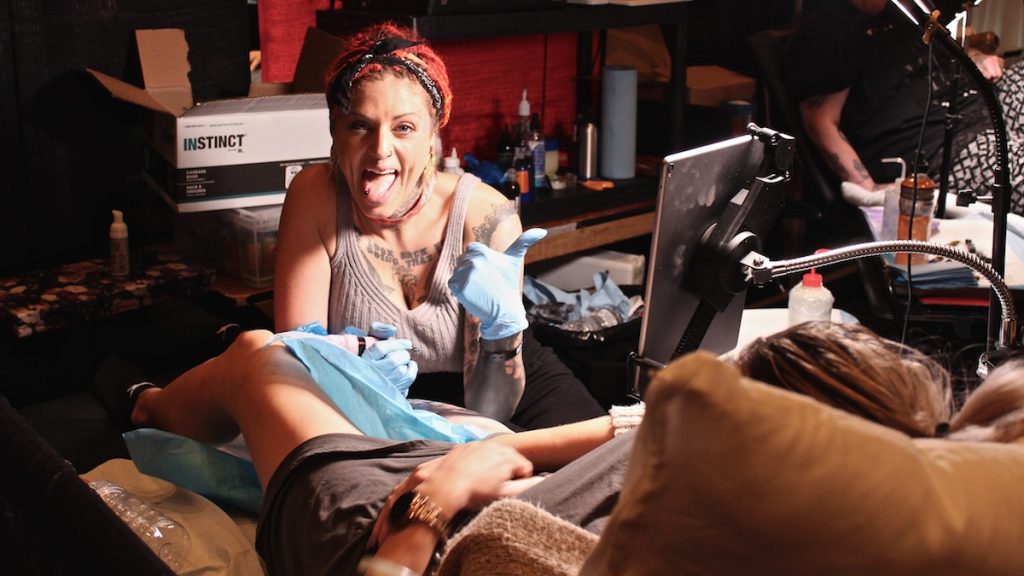Realism tattooing is growing in popularity. Recently many artists, who practice the form, gathered at the Hilton Lac-Lemay in Gatineau to show off their skills. These artists use shading, line work and colour layering on human skin to capture real-life imagery. This is a glimpse into their world.
The Gatineau expo hosted more than 80 tattoo artists. With artists accepting clients via walk-in or by appointment, a lot of bare skin was exposed as the artists worked in an open setting. [Photo © John Balser] Tattoos hurt. A tattoo gun can contain between seven to 12 needles that puncture the skin at a rate of up to 3,000 times a minute. Each prick of the needed goes about a millimetre beneath the skin. [Photo © John Balser] Bottles of tattoo ink were on sale alongside the tattoo vendors. This vegan-friendly ink is owned by Federico Ferroni, an Argentine tattoo artist who specializes in Japanese inspired realism tattoos at Love/Hate Tattoo shop in Miami. [Photo © John Balser] Jay Auger joined Quebec City’s Paradoxe Tatouage in May 2018. Auger, who specializes in realism and blackwork — tattoos that are rendered in solid, bold planes of black ink,. He embraces his appearance, noting that it gives him a unique identity. “I don’t care about the looks I get from people,” says Auger. [Photo © John Balser]
Realism tattoos can be identified by their lack of hard outlines. Instead, artists rely on colour layering and gradual shading to frame their work. [Photo © John Balser]
According to Ipsos, Canadian women are more likely to have tattoos than men, with about 24 per cent of women having at least one tattoo, compared to 20 per cent of men.
Flash art is a common way for artists to showcase their individual tattooing style and potential tattooing ideas to possible clients. [Photo © Ciaran Morgan] London Slade, a Toronto native, is trained in Tebori — an ancient method of Japanese needlework. He has created a reputation for himself for creating full body tattoos. “There have been some projects that have taken me more than 20 hours,” said London Slade of Weirdsville Tattoo, a parlour in Oshawa, Ont. Realism tattoos demand intense attention to detail and require lots of time and patience.
Laurent Lajeunesse, an artist from Quebec City has a Sclera tattoo (or cornea tattoo). This unique and potentially dangerous type of tattoo sees tattoo ink injected under a very thin layer of skin that protects the whites of the eye, changing its colour permanently. Tattoo culture is changing. According to a survey by Ipsos, 36 per cent of Canadians between the ages of 18-34 have gone under the needle. In comparison, 24 per cent of Canadians between the ages of 35-54 have a tattoo. Young Canadians may be getting tattoos today because they are more widely accepted. [Photo © John Balser]
